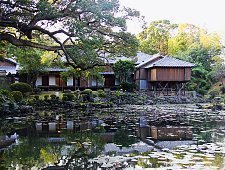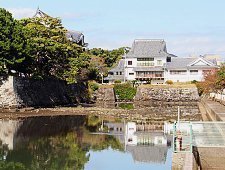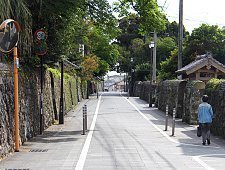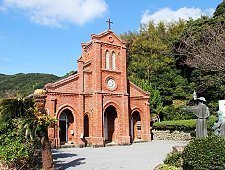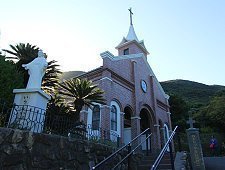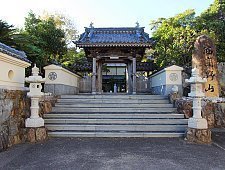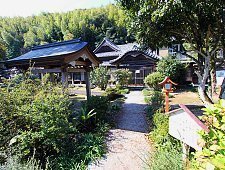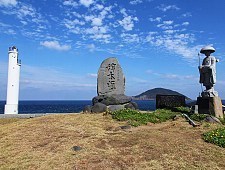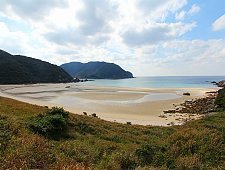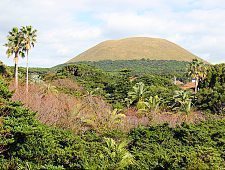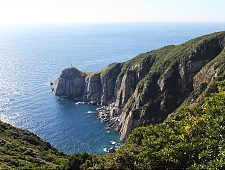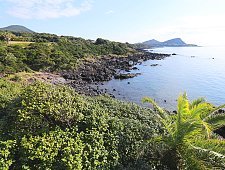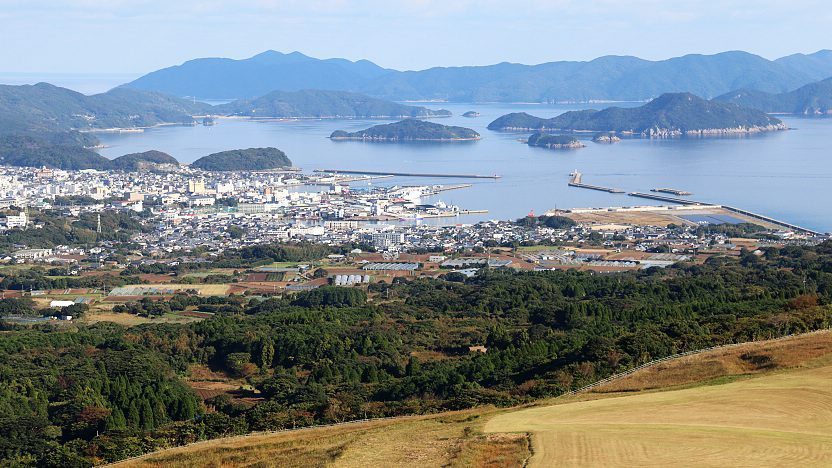
Fukue Island (福江島, Fukue-jima) is the largest and most populated of the Goto Islands and is home to the islands' largest town around the Port of Fukue in the east of the island. The entire island falls under the municipality of Goto City, which also covers Hisaka and Naru islands.
The island's hilly terrain plays host to various churches and temples including the Goto Islands' oldest of both, as well as other historical sites, many of which are just a stone's throw from unspoiled nature spots. The natural beauty on the island includes but is not limited to beaches, craggy coastlines and mountains from where great views can be had of some of the neighboring islands.
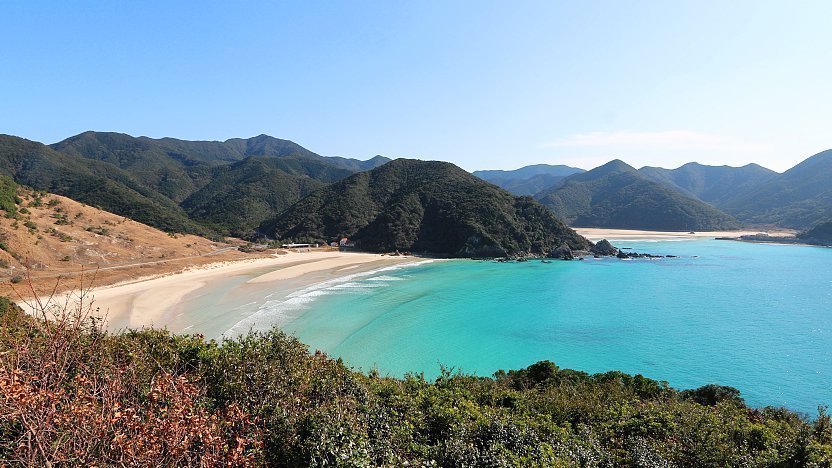
The town around the Port of Fukue with its selection of hotels, restaurants and shops serves as a convenient base from which to explore the islands. Here also stands a ruined castle that served as the seat of power from which the entire Goto fief was ruled during the Edo Period. Today little of the castle remains save for a section of the old moat and an old residence, with much of the grounds now covered by a school. Despite this, parts of the old castle and the adjacent samurai district, which has also been mostly superseded by modern construction, make for a pleasant place to stroll.
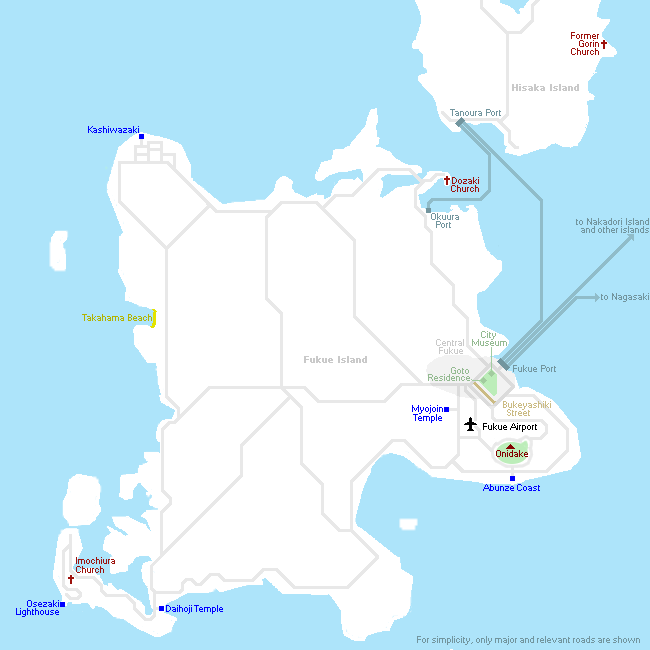
Some of Fukue's top attractions are listed below:
Historical sites
Fukue boasts multiple sites related to the feudal lords who ruled over the islands during the Edo Period (1603-1868), especially around the centrally located, former castle:
Churches
Around twenty churches have been built across the island of Fukue since the end of the feudal era. Two of the most notable ones are listed below:
Kukai-related sites
Kukai, posthumously known as Kobo Daishi, is one of the most revered figures in Japanese history. He introduced the Shingon sect of Buddhism to Japan after studying in China in the early 9th century. On his way to and from China, Kukai spent some time on the Goto Islands which served as the last port of call on the journey to the continental mainland:
Nature
Getting there and around
How to get to Fukue Island
By air from Nagasaki or Fukuoka
Fukue Airport is served by multiple flights per day from Nagasaki and Fukuoka. The flight takes around 40 minutes and cost around 8,000 to 19,000 yen one way. Buses connect the airport with the city center and Fukue Port (15 minutes, 310 yen one way) and are timed to flights.
By ferry from Nagasaki
Both high-speed boats and car ferries operate multiple times per day between Nagasaki and Fukue Port. By high speed boat, the one way journey takes 90 minutes and costs about 9000 yen, while by car ferry it takes around three hours and costs about 4000 yen. Some of the ferries stop on Nakadori Island along the way which increases travel time considerably. The cost to transport a regular-sized car is around 25,000 yen one way.
From other islands
A dense ferry network connects Fukue to the other islands in the Goto Island chain. The most important route connects Fukue Port with Narao Port on Nakadori Island and is served by high-speed boats and car ferries multiple times per day. By high-speed boat, the one way journey takes 30 minutes and costs around 2800 yen, while by car ferry it takes 60-90 minutes and costs around 1000 yen. The cost to transport a regular-sized car between the two islands is around 7000 yen.
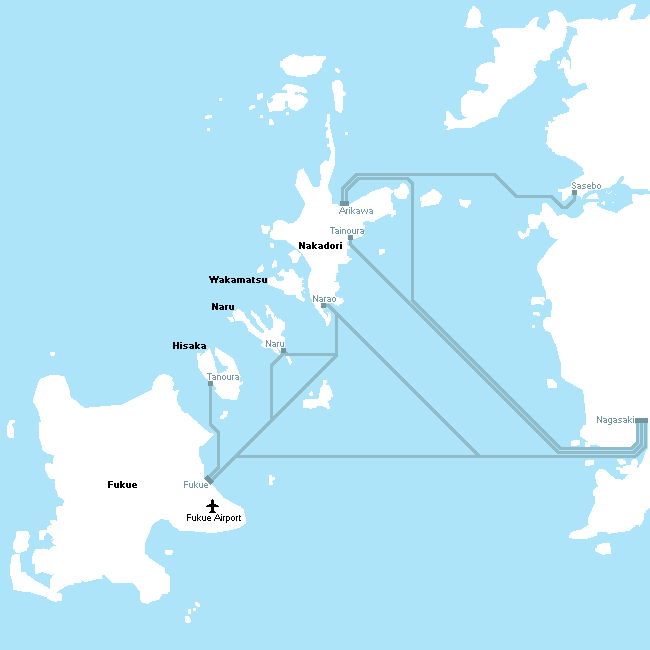
How to get around Fukue Island
Fukue Island is covered by a network of bus routes; however, these are predominantly for locals and generally don't serve the tourist sites. One exception are the buses that connect central Fukue with Daihoji Temple and Imochiura Church, but even these services are infrequent.
It is for this reason that by far the most convenient way to get around Fukue Island is by rental car. A few car rental outlets can be found around central Fukue which is close to both the port and airport. The island is relatively small and can be driven around in about half a day, with a few main roads connecting the different parts of the island and narrower, windy coastal roads.
How to get to and around the Goto Islands

Questions? Ask in our forum.
